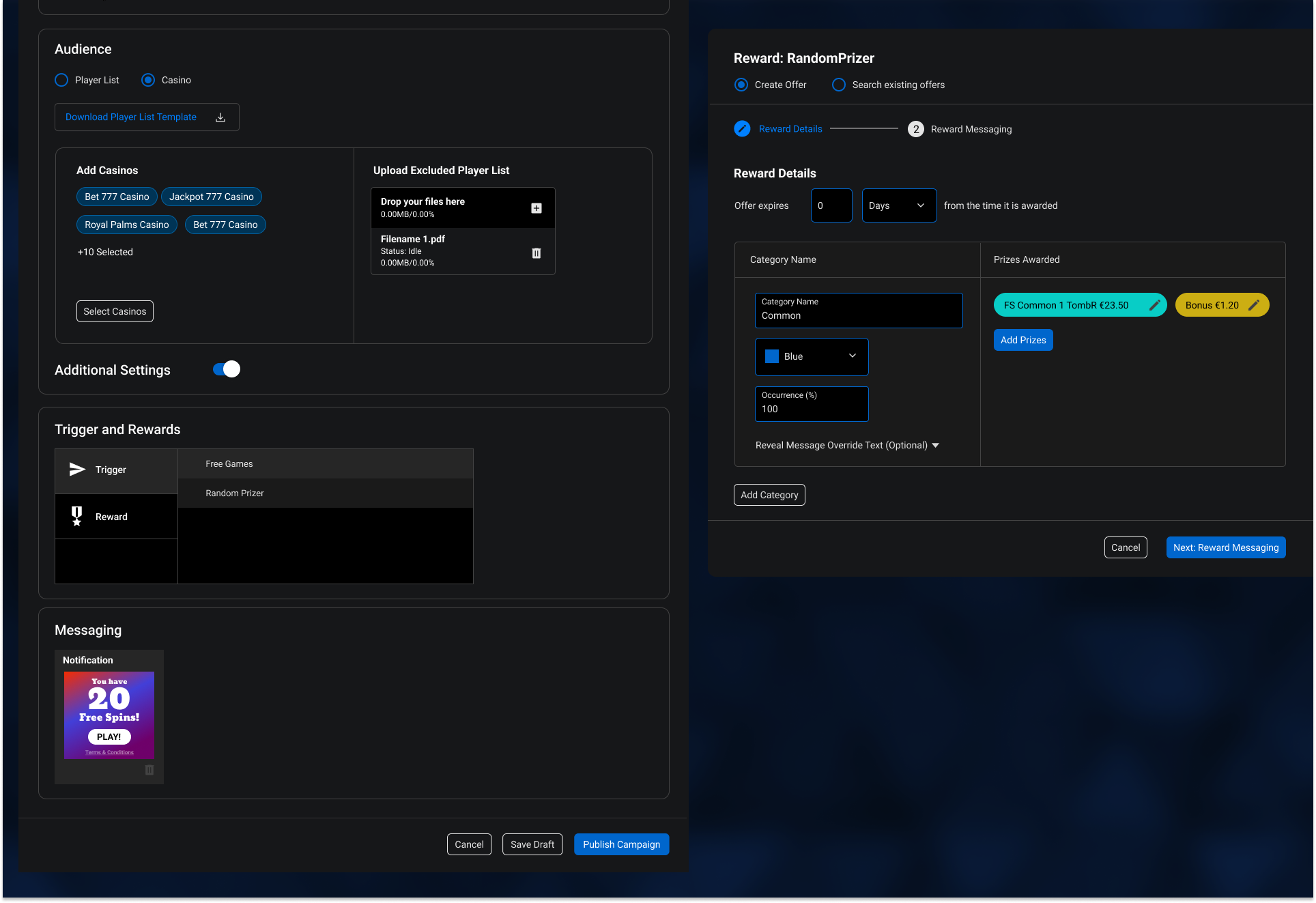Ecosystem Project Def
To create an all-in-one product family, for game and player management which allows users to simplify the workflow by providing tools for a complete cycle of need.
situation
As UX Specialist in the back-office space, I noticed that all game and player back-office apps had individual logins even though they belonged to the same product suite. If a user required to accomplish a task that spanned multiple of these apps, he would be required to login to each of the indivisual apps. This was tedious and inefficient. As a team we decided to unify all apps under an umbrella suite of apps called the ‘Ecosystem’.
task
My role in the project was to be the lead designer and to drive the designs for the ‘Ecosystem’.
action
The goal of the project was to combine apps into a unified experience making it efficient. This was done in many levels
UX Acivities involved:
Interview users and identify potential gaps.
Information Architecture and user flows for all major user journeys.
Make prototypes for navigation and user flows to test with end-users.
Come up with design system for UI components.
Work with Developers, Testers during UI Implementation
User Study: Over time in this role I have collected contextual inquiry and user interviews documents. These are routine checks per product where end-users of these products are scheduled and sit with me for 1 hour and take me through how they would use this product on a daily basis. These interviews are great at getting first hand information of user processes, pain points while using our apps, identifying gaps for improvement and build great relationship with our customers. The interviews reveal streamlining of apps in the next step to the evolution of our products. This will significantly improve task completion times, task success rate, reduce errors, and inprove overall satisfaction with our products.
Navigation: Unification of more than 20 apps in the suite required the introduction of a common navigation bar for universal access. We prototyped several versions of modern and traditional navigational styles. The client shortlisted the options to test with the end-users and eventually we chose the one most users preferred. It was the tradional top bar with sub nav.
Information Architecture: All apps were categorised under 5-6 main categories by the client. These catory names formed the top nav items of the navigation bar. Each of these categories has sub-navs based on the type of activity the user wanted to perform.
Simplified user journeys: Many apps were combined into a unified streamlined workflow that allowed users to perform a series of actions within one app. Optimization of task flow was introduced in creating several types of campaig creation such as mission and rewards, tournaments, random prizes, etc. Multiple apps were combined and now formed individual steps of a wizard approach. These steps included campaign details, schedule, campaign config, audience, and messaging.
Style Guide: Now that all apps belonged to the same umbrella app, a design style guide was mandatory to ensure consistency across all teams working on it. The style guide was created from an atomic level such as the individual UI components to a molecular pattern level that combined these components into UI patterns. The lead frameworks developed took this style guide and created storybook UI compnents that could be used across teams to maintain consistency.
Color Modes: The style guide was created for both light and dark mode, across multiple brands.
Technical Improvements: Improved loading times as well as single data source for better accuracy and availability.
Business Strategy: Increase revenue by allowing Operators to offer more products and provide better offers to players
Applications looked at:
Player tools
Operator management
Games and product showcase
Reports and recommendations
Games, markets and customer data
Escalation resolution
result
We tested the ecosystem prototypes with end-users of traditional operators and they rated it 8/10. They particularly liked the unified approach to creation of the campaign. They no longer had to log into individual applications as they could now do all their task in one streamlined approach. This drastically reduced their task completion time and ease of use.
‘Create Campaign’ one-pager.
Add Reward Type




